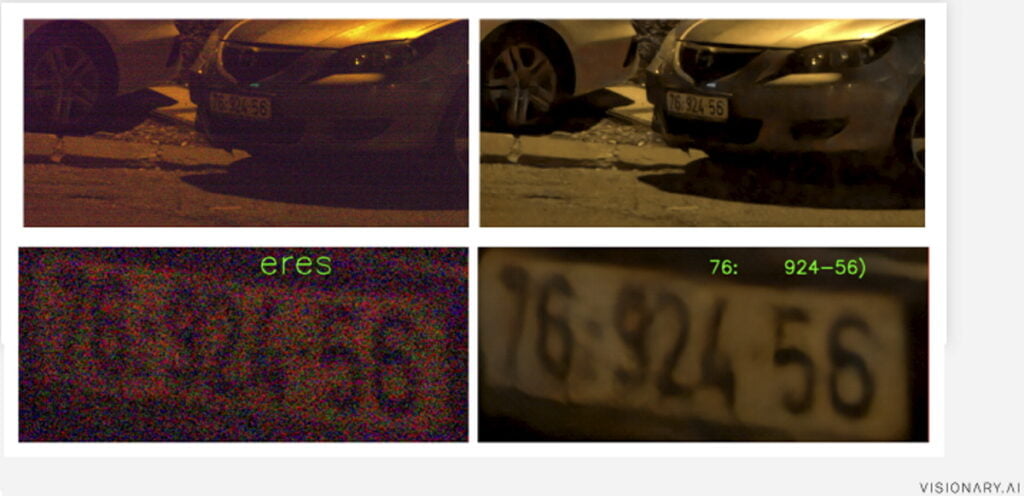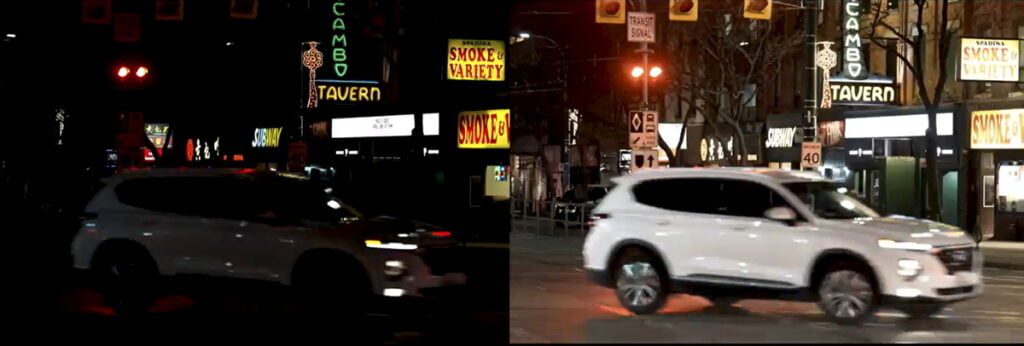First-ever software solution enhances images from drones, endoscopes, surveillance cameras and more
If you’ve ever taken a disappointing selfie using your smartphone’s “night mode”, you’ll understand what Oren Debbi and his company are about.
They’re transforming the world of low-light photography so that cameras can literally see in the dark.
Their software enhances still or video images from any camera – not just smartphones or high-end professional equipment – but anything from doorbell cameras to drones, medical endoscopes to CCTV surveillance cameras.

And it doesn’t just see in the dark. True Night Vision technology, developed by visionary.ai, penetrates fog, copes with glare and can handle scenes with what photographers call a “wide dynamic range” – where some parts are very bright and other are in deep shadow. It allows cameras to see the unseen.
It goes far beyond improving the quality of a night-time selfie. It helps farmers who use remote cameras to see how their crops are growing, military drone operators who need to know what the enemy is doing, police officers who need to see the license plate on a getaway car and the doctors finding out what’s going on inside their patient’s body.
In these situations the quality of the image is critical. A good lens and a high-quality sensor (the part that converts light into a digital image) will improve the image in terms of sharpness and resolution, but hardware has its limitations
Oren Debbi says his startup, visionary.ai, uses a radically new approach to enhance image quality, by using software to squeeze as much detail as possible out of existing hardware.
He leads a team of optic experts, computer vision engineers, and professional photographers, who have experienced the limitations of standard enhancement methods.
Rather than embedding technology into a physical chip inside a device, his team has created software to the job. The company says it has “created the world’s first only 100 per cent software ISP (image signal processor) enabling cameras to to achieve the next generation of image quality in situations of almost complete darkness”.
It can process any image, regardless of how and where it is taken. And because it’s software, rather than hardware, it can readily be updated as the company makes further technological advances.
“Using our software, we’re able to take the signal and make sure no data is lost and to get the maximum possible out of it,” Debbi, CEO of the company, tells NoCamels.
Sign up for our free weekly newsletter
Subscribe“So if it’s a good camera, we get even better results. And we work with very high-end cameras. If it’s a poor camera, if there’s a small sensor that doesn’t bring in a lot of light used inside a human body, we can get the most out of that as well.
“Our software is taking the video in real time processing it all in real time. And squeezing much more out of the hardware.”
Yoav Taieb, Visionary’s chief technical officer, explains just how effective the technology is. “A key feature of our ISP is imaging in extreme low light,” he says.“ We can essentially detect full-color images and video in situations of almost complete darkness, or lighting as minimal as moonlight.”

Recording images inside the human body is one area where image enhancement can make a crucial difference. It’s extremely challenging because the the tip of the endoscope – which houses the image sensor and tiny LED lights – needs to be as small as possible, but the image quality need to be as high as it can be.
Tissue, fat and liquids inside the body are highly reflective, which creates a lot of glare. Visionary’s software cleans up the image by separating the signal (the information you want) from the noise (the information you don’t want).
Drones also benefit. They now play a key role in agriculture, real estate, surveillance, wildlife monitoring, disaster management, and much more, but face challenges in low-light conditions. Fitting the drone with a larger sensor is one option, but it drains the battery, and reduces the time it can remain airborne. A software solution – improving the quality with existing hardware – is a win-win.

“In most computer vision systems, AI fails when conditions are difficult,” says Debbi. “So 90 per cent of development goes into cases of poor visibility, poor lighting or difficult lighting. That’s exactly where we provide most value.”
Camera manufacturers buy chips from outside suppliers to do the ISP – image signal processing – and build them into their equipment.
“It’s very generic, very far from state of the art, it’s not very premium quality,” says Debbi. “The fact that we’re doing software means we’re able to customize, to get much better results and even do over-the-air updates.
“We believe the future of ISP is going to be software-based. We want to work with whoever is making the most cameras and devices and we want to provide them with a lot of value. Our goal is to get into millions, or billions of cameras in the world.”
Related posts

Editors’ & Readers’ Choice: 10 Favorite NoCamels Articles

Forward Facing: What Does The Future Hold For Israeli High-Tech?

Impact Innovation: Israeli Startups That Could Shape Our Future




Facebook comments